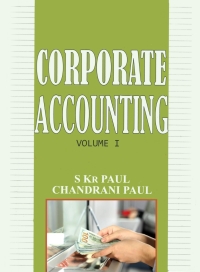Chapter 10 Demonstration Problems Note Payable: 1. Record the note when issued. 2. Record interest due over the life of the note at the end of each period. 3 At maturity, record remaining interest due and the discharge of the debt. Problem: On Sept. 1 Wycoff Company borrows $7,500 by signing a 4 months 12% interest bearing note. On December 31, Financial Statements are prepared after the adjusting entries for the period are recorded. On Jan. 1 the note is discharged in full. Sales Tax Payable: Jet Clean sold a washing machine for $1,500 and collected 8% sales tax at the time of the sale. Jet-Clean sold a washing machine for $2,000 during a "we pay the sales tax sale event. Payroll - Basic Journal Entries: To record employee paychecks: Salaries Expense $Gross Pay Social Security Tax Payable XXX Medicare Tax Payable XXX Federal Income Tax Payable XXX Other Payable Acc'ts as needed XXX Salaries Payable/Cash $Net Checks To record employer payroll taxes (at time payroll is paid): Payroll Tax Expense XXX Social Security Tax Payable XXX Medicare Tax Payable XXX State Unemployment Tax Payable XXX Federal Unemployment Tax Payable XXX Unearned Revenue: 1. Record the payment for services/product as a liability. 2. As the services are performed or product is delivered, record the earning of the revenue. The Performing Arts Center sells season ticket subscriptions in the amount of $1,000 for 5 performances. As each performance occurs: Financing Considerations: 1. Debt funding is cheaper than equity funding. 2. Debt funding uses leverage to increase shareholder returns. 3. Debt funding is riskier than equity funding. Types of Bonds: Secured bonds: specific assets of the issuer are pledged as collateral for the bonds. Unsecured bonds: are issued against the general credit of the issuer. Convertible bonds: can be converted into shares of common stock at the bondholder's option. Callable bonds: subject to retirement at a stated amount prior to maturity at the option of the issuer Present Value $100 today is more valuable than $100 in the future. You can invest the $100 you have today and end up with more than $100 in the future. How much do I need to invest today to have $100 in one year if interest rates are 7%? Annuity - series of equal payments at equal intervals. Assume that you have won a sweepstakes with a $5 million grand prize. Now you have to choose how to take your winnings: $500,000 per year for 10 years or $3 million now. If interest rates are 11%, which would you choose? Present value of an annuity=Annuity amount x Factor from table. Bond payable entries Contract rate = market rate, bond sells at face value Contract rate > market rate, bond sells at a premium Contract rate











